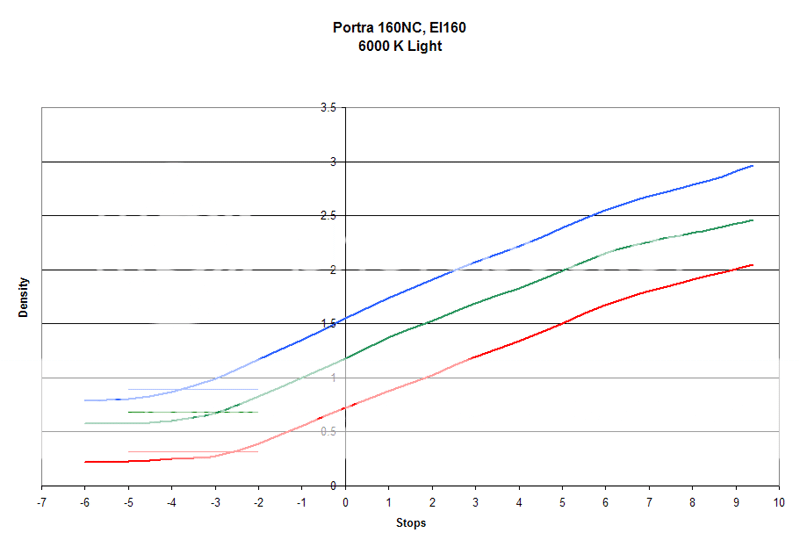Helen B
TPF Noob!
- Joined
- Sep 16, 2007
- Messages
- 3,296
- Reaction score
- 467
- Location
- Hell's Kitchen, New York
- Can others edit my Photos
- Photos NOT OK to edit
I'd be very interested in seeing a single exposure with a 15-stop exposure range, provided you have one to show. Details of the shot, including meter readings and development scheme would be greatly appreciated.
I have none of my notes or examples for B&W here in NYC, but as part of the D3 vs film evaluation I will re-do some of the tests. I used to use Xtol 1+5 and Rodinal 1+300 for contraction. A range of 15 stops is well beyond what one would normally require.
Here are the results of my test of the previous version of Portra 160NC. I didn't give it enough exposure to reach the shoulder, but you can see that it has at least 13 stops of range above the toe. That is more than enough for most scenes - ie the film can cope with a greater brightness range than most scenes, and using multiple exposures will not increase the recorded dynamic range.

Best,
Helen






![[No title]](/data/xfmg/thumbnail/37/37529-aec369c64871d180644e1802850863a9.jpg?1734170687)




![[No title]](/data/xfmg/thumbnail/37/37528-9e874fc2fc9aad7c13c894c1439dcc10.jpg?1734170686)
![[No title]](/data/xfmg/thumbnail/39/39471-60497f63216ffba784d91a339e9e917e.jpg?1734173563)
